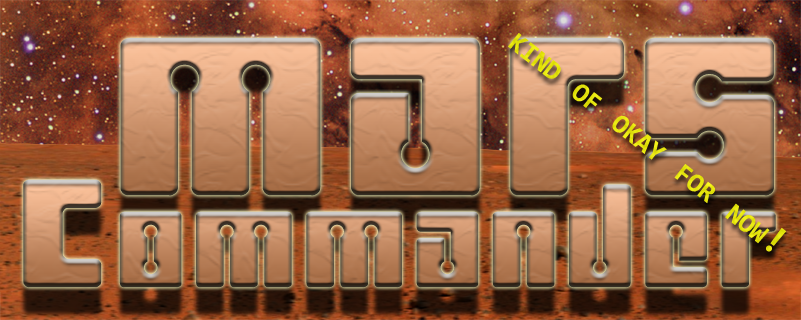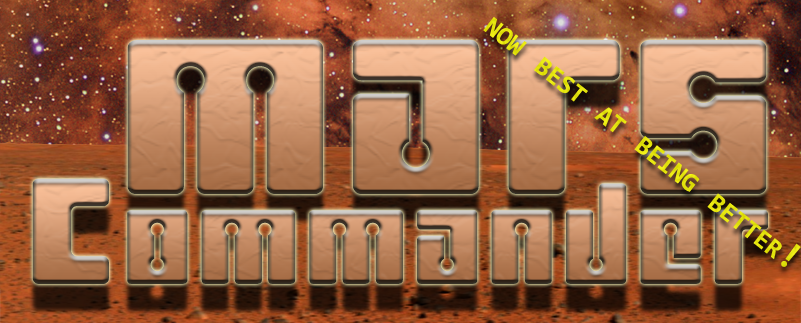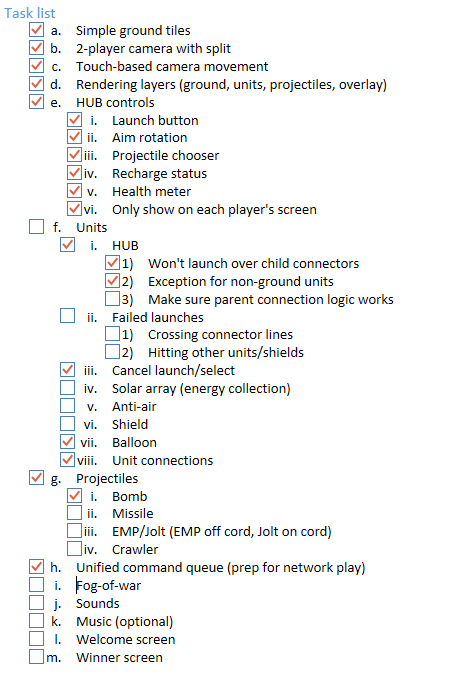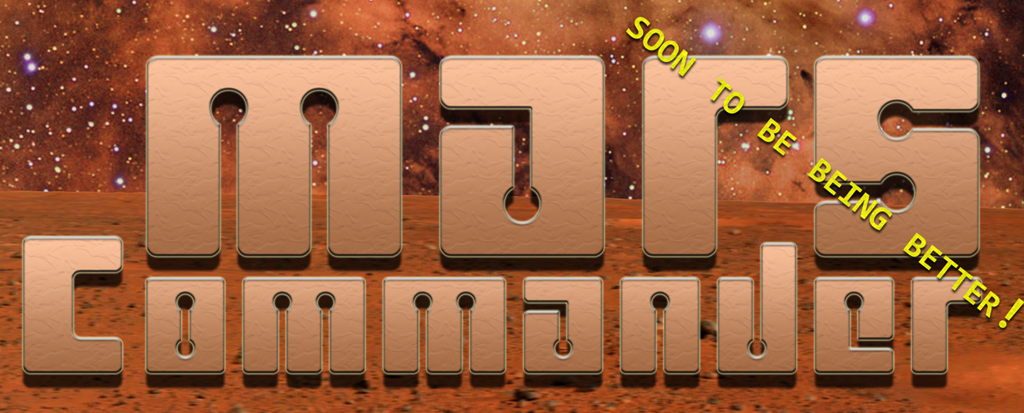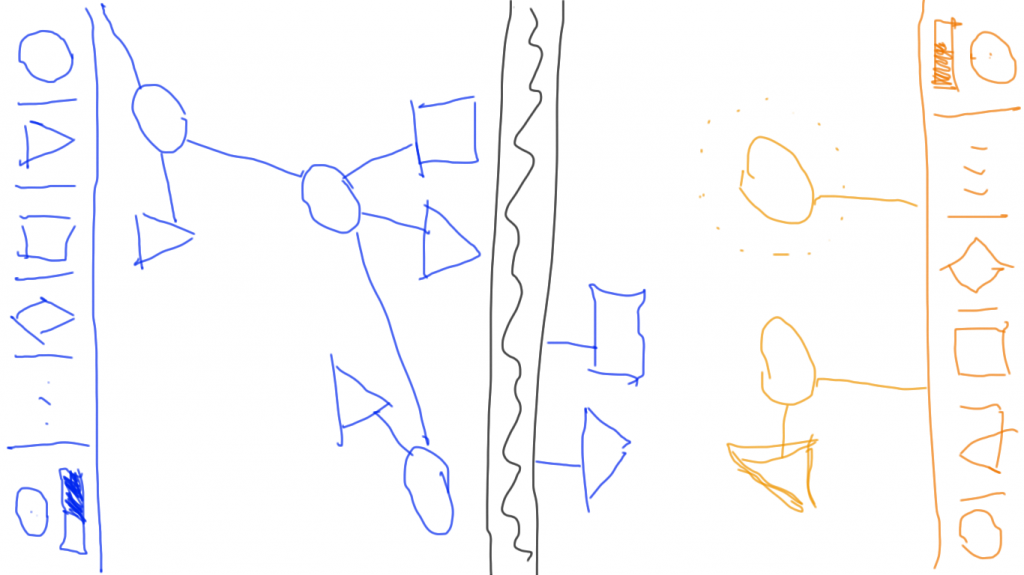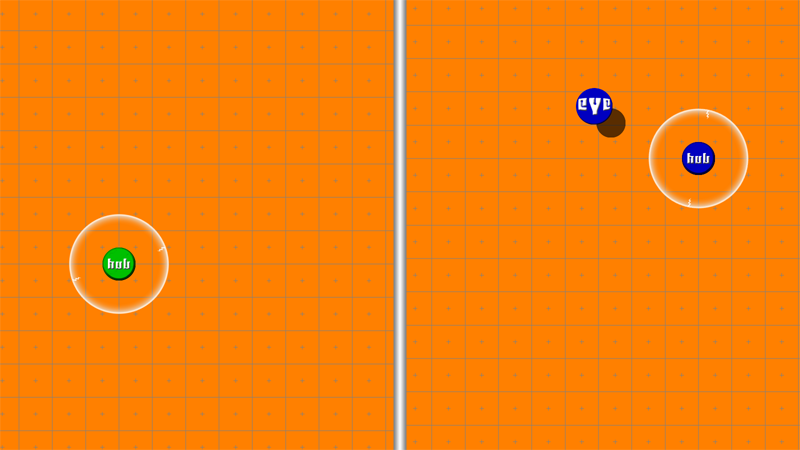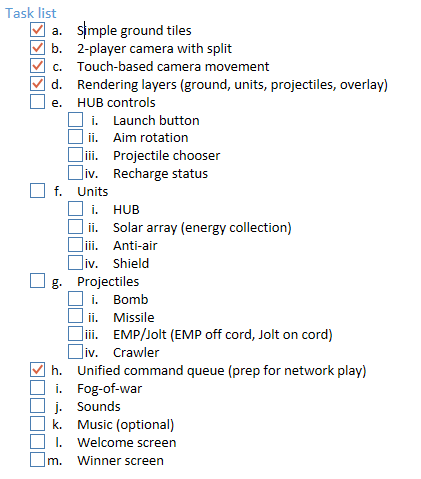Project #2: Post-mortem
What went well?
MonoGame – Microsoft’s XNA iswas a fantastic framework for indie developers in both 3D and 2D games. My first for-reals game (Pendulous) was written with XNA which enabled us to release for Windows, Windows Phone, and the freakin’ Xbox 360 with relatively few code changes. Amazing! As with many things I love, it has since been defunded. But! MonoGame has done a great job re-implementing the API on top of SharpDX/Mono (cross-platform managed DirectX). I was able to pretend the pain of losing XNA was gone and use MonoGame almost exactly as I did the XNA toolset. There are a few holes in the content pipeline side of things, but all-in-all MonoGame is like sitting in front of the fire with your favorite dog after you thought it ran away.
Game Jam! – This isn’t something that necessarily went well during the project, but the issues that are outlined in the “terrible” section below brought forth inspiration to put together a gamejam/hackfest/whatever tool set. A friend pointed me to deepnight a couple weeks ago and I got totally lost in his world. His game “Law Breaker” is a single-screen Grand Theft Auto that feels like Pac Man robbing banks. Anyway, the fact that he could put something like that together in a couple days got me taking a hard look at my toolset and realize it needs some serious upgrades. More on this later…
What was terrible?
Pre-Planning – Man, I did not do this well. You can read about my expectation reset here.
Burnout – I hit 44 hours with Mars Commander which isn’t terrible for the scope I was trying to hit, but it was spread out over three months. My time log is filled with entries that are only one or two hours long at the most and in the final month I only ended up working on the project a couple times a week. These projects deserve at least a couple full weekend days to get them out the door before my brain moves on to the next shiny object in view.
Start Stop Continue
START putting together a game jam toolset for the next hair-brained idea. I’ve already started putting together a game engine written with MonoGame so I don’t have to go through writing yet-another 2D game engine in C#. I also need to put whatever code elements I use up on GitHub. These days if I don’t see a tool or library on GitHub, I question its validity.
STOP rushing pre-planning. Not taking a hard look ahead really hurt the project this time around.
CONTINUE with cross-platform tools. This is the way of the future my friend. I hope the next software something I do is done in Xamarin so I can see what that world is all about.
